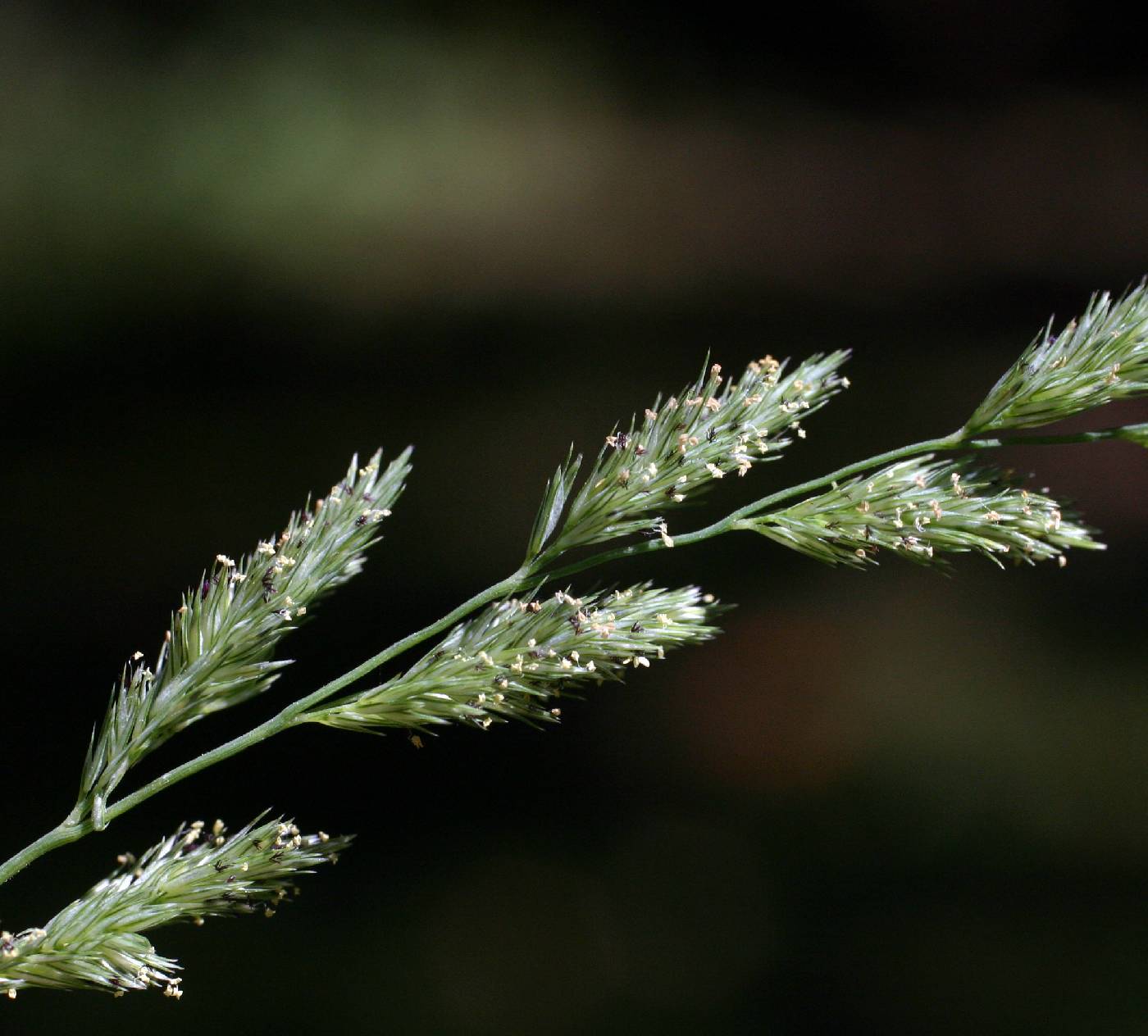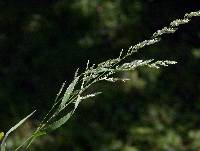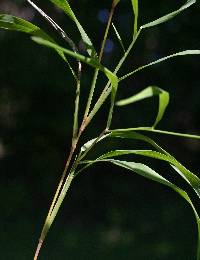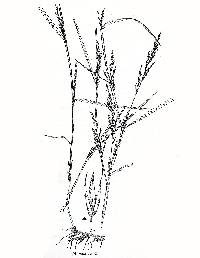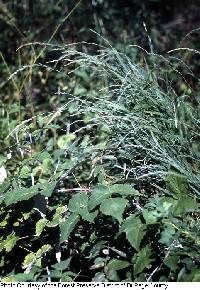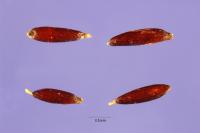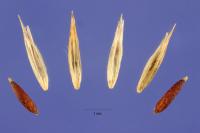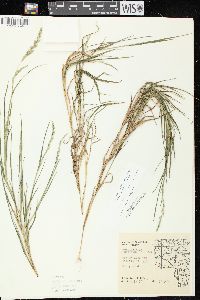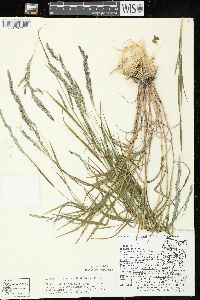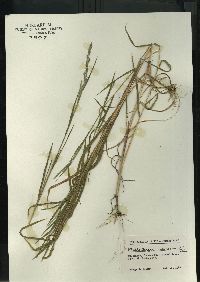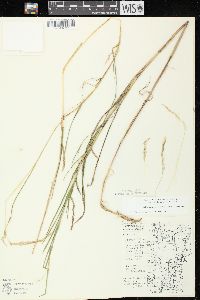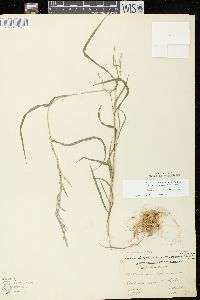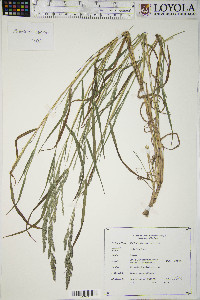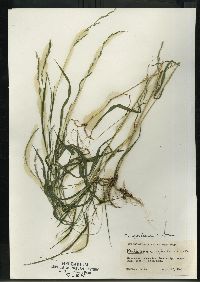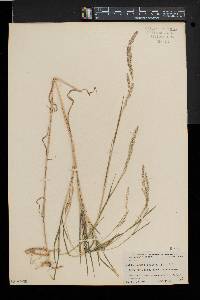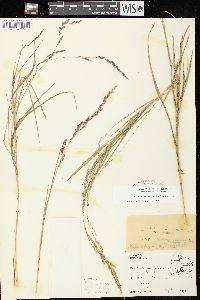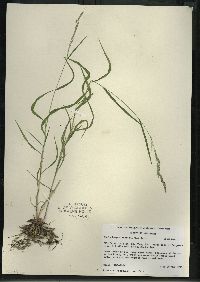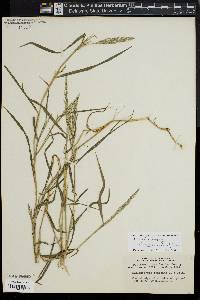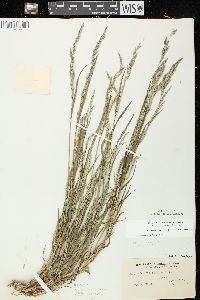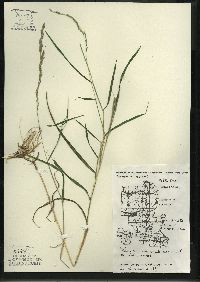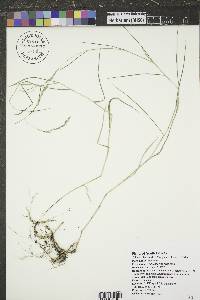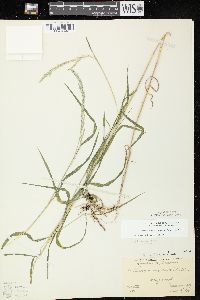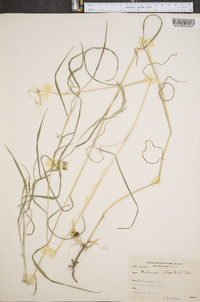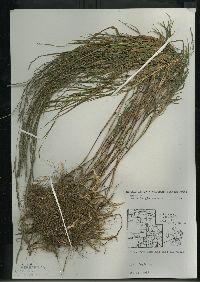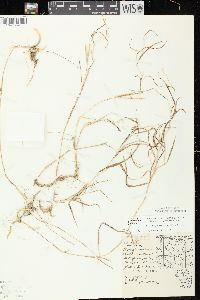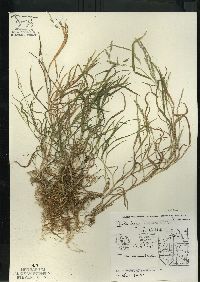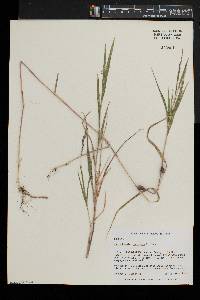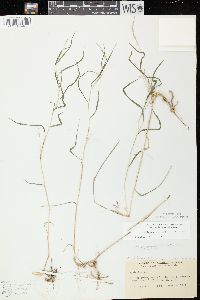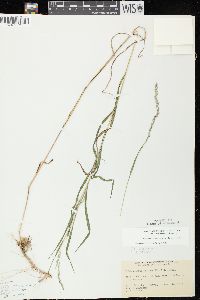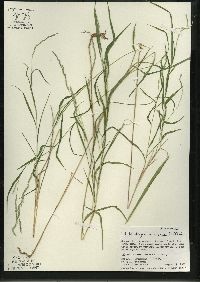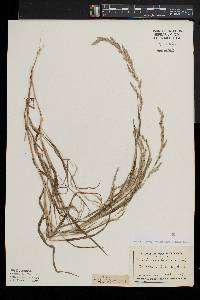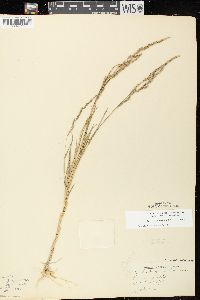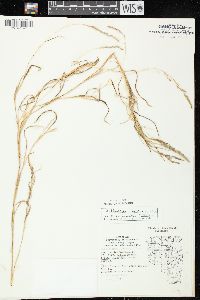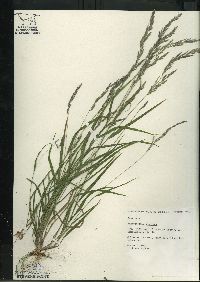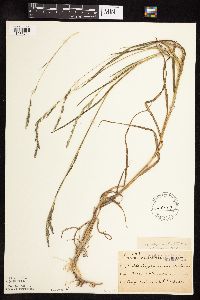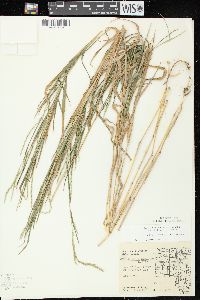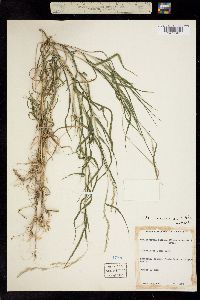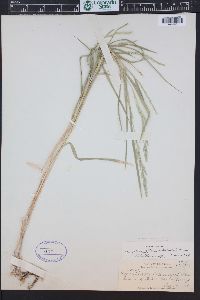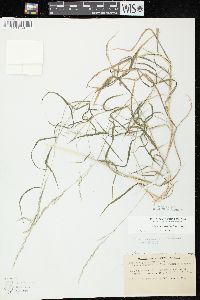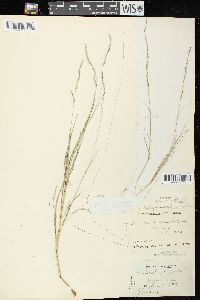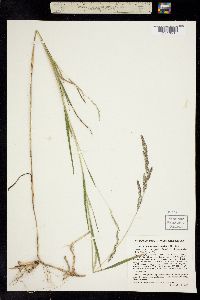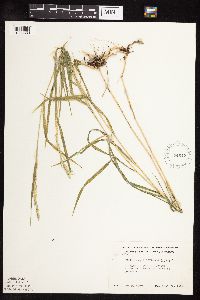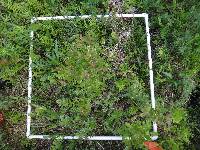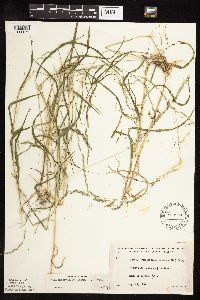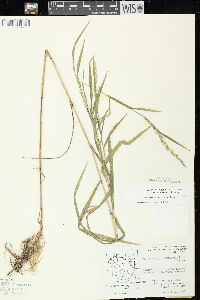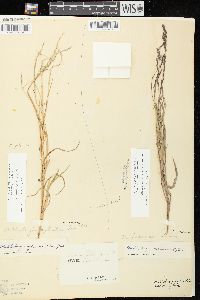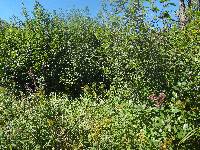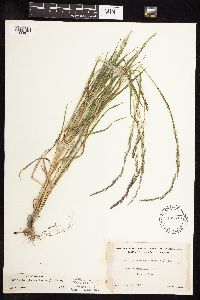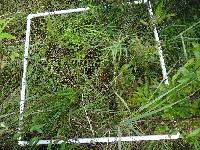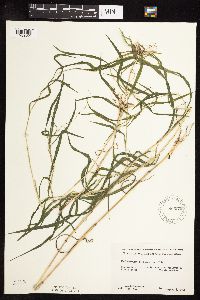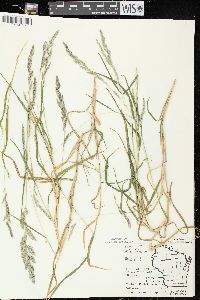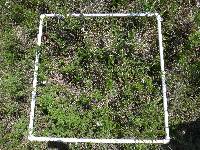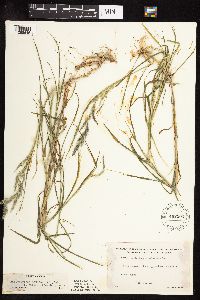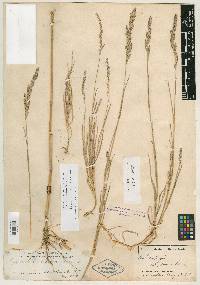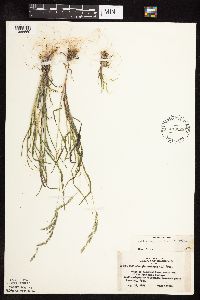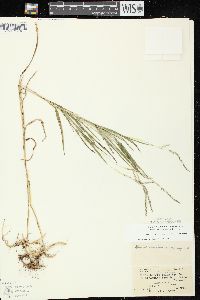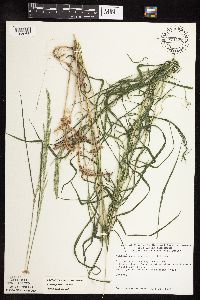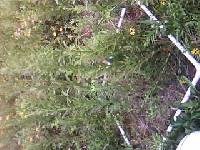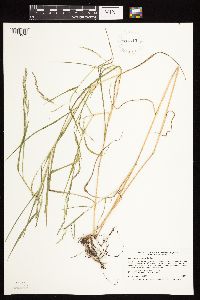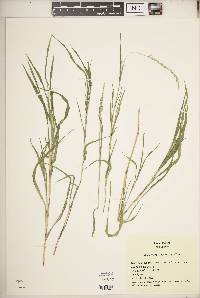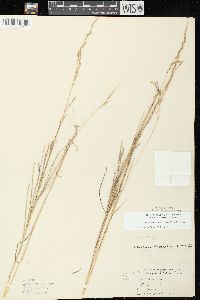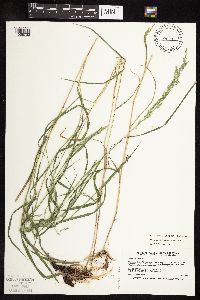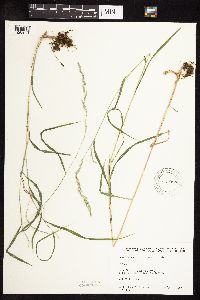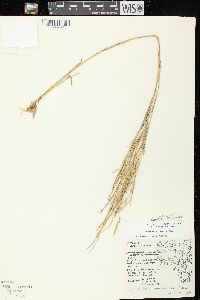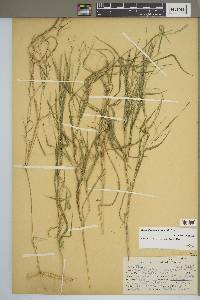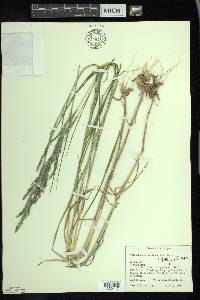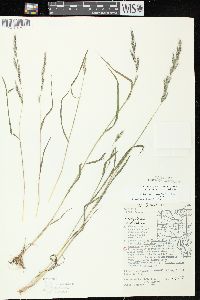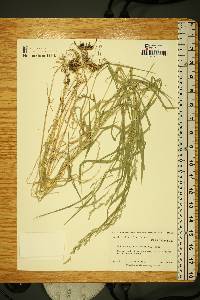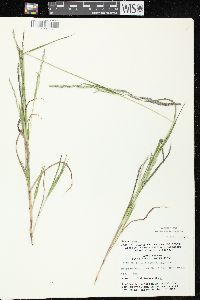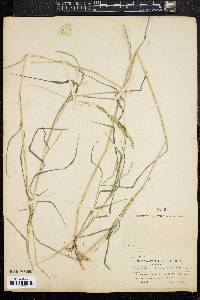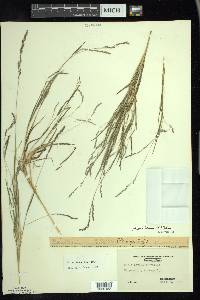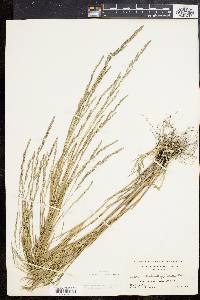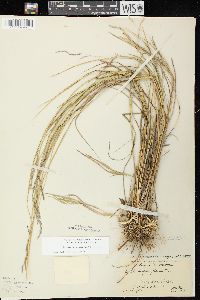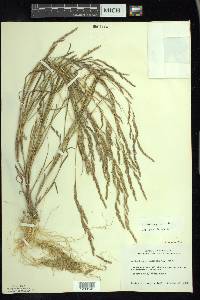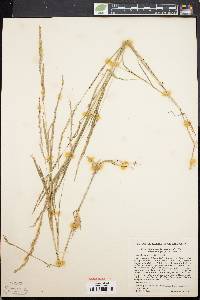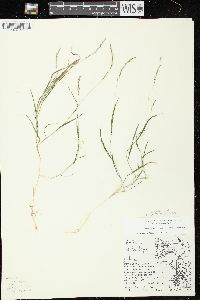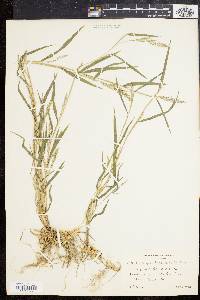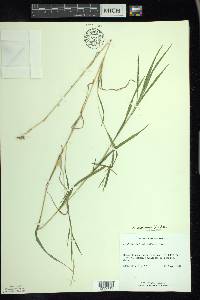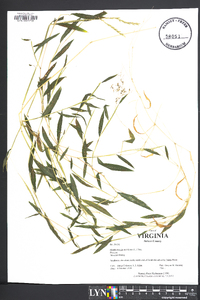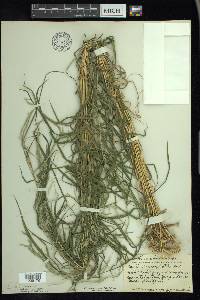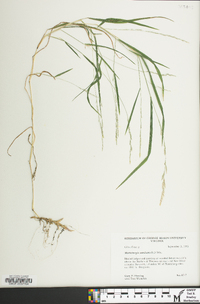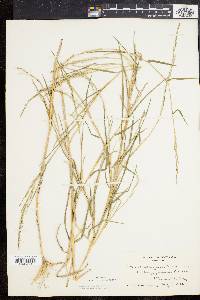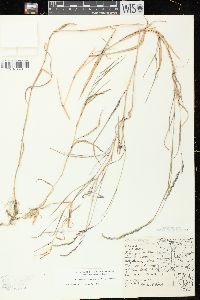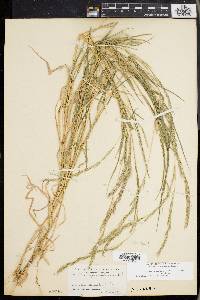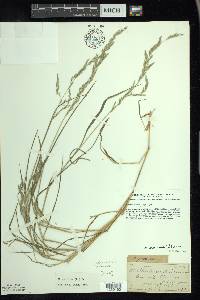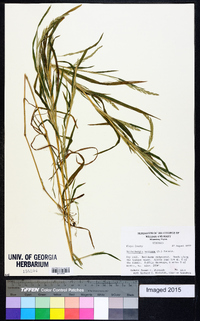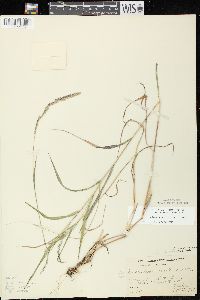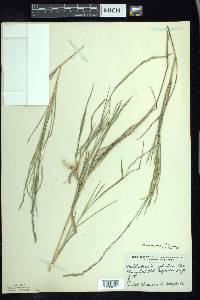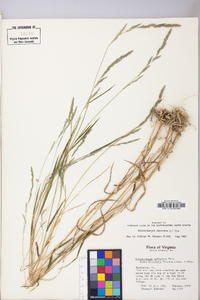
|
|
|
|
Family: Poaceae
Mexican Muhly, more...Muhlenbergie Mexicaine, Wirestem Muhly
[Agrostis mexicana L., moreCinna mexicana (L.) P. Beauv., Muhlenbergia ambigua Torr., Muhlenbergia foliosa (Roem. & Schult.) Trin., Muhlenbergia foliosa subsp. ambigua (Torr.) Scribn., Muhlenbergia foliosa subsp. setiglumis (S. Wats.) Scribn., Muhlenbergia foliosa var. setiglumis , Muhlenbergia mexicana f. mexicana (L.) Trin., Muhlenbergia mexicana var. filiformis (Willd.) Scribn., Muhlenbergia mexicana var. purpurea Alph. Wood, Polypogon canadensis E. Fourn., Vilfa mexicana (L.) P. Beauv.] |
Plants perennial; rhizomatous, not cespitose. Culms 30-90 cm tall, 0.5-2 mm thick, erect, much branched above the base; internodes dull, puberulent or glabrous for most of their length, sometimes strigose immediately below the nodes. Sheaths smooth or scabridulous, somewhat keeled; ligules 0.4-1 mm, membranous, truncate, lacerate-ciliolate; blades 2-20 cm long, 2-6 mm wide, flat, scabrous or smooth, those of the secondary branches similar in length and width to those of the main branches. Panicles terminal and axillary, 2-21 cm long, 0.3-3 cm wide, dense; primary branches 0.3-5.5 cm, appressed or diverging up to 30° from rachises; pedicels to 2 mm, strigose; axillary panicles exserted on long peduncles. Spikelets 1.5-3.8 mm, often purple-tinged. Glumes subequal, 1.5-3.7 mm, equaling or slightly shorter than the lemmas, 1-veined, tapering from the bases to the acuminate apices, unawned or awned, awns to 2 mm; lemmas 1.5-3.8 mm, lanceolate, pubescent on the calluses, lower portion of the midveins, and margins, hairs shorter than 0.7 mm, apices scabridulous, acuminate, unawned or awned, awns to 10 mm; paleas 1.5-3.8 mm, narrowly lanceolate, apices acuminate; anthers 0.3-0.5 mm, yellow to purplish. Caryopses 1.1-1.6 mm, fusiform, brown. 2n = 40. Muhlenbergia mexicana usually grows in mesic to wet areas such as moist prairies and woodlands, stream banks, roadsides, ditch banks, lake margins, swamps, bogs, and hot springs, at elevations 50-3300 m, and is found in many different plant communities. Despite its name, M. mexicana grows only in Canada and the United States. Plants with awns 3-10 mm long belong to Muhlenbergia mexicana var. filiformis (Torr.) Scribn., and those without an awn or with awns less than 3 mm long to Muhlenbergia mexicana (L.) Trin. var. mexicana. Early in the flowering season, M. mexicana may be confused with plants of M. bushii in which the axillary panicles are poorly developed, but they differ in their dull internodes and the fact that the blades on the secondary branches are usually similar in length and width to those of the main branches. Perennial rhizome-forming herb 30 cm - 1.1 m tall Leaves: with open, smooth to minutely rough sheaths that are somewhat longitudinally ridged, and ligules that are 0.4 - 1 mm long, membranous, flat-topped and unevely cut or hairy along the margins. The blades are 2 - 20 cm long, 2 - 6 mm wide, flat, rough to smooth, with the blades on secondary branches similar to those of the main branches. Inflorescence: terminal and axillary, spike-like and branched (panicle), 2 - 21 cm long, 0.3 - 3 cm wide, appressed or diverging to 30 degrees from the main axis. The axillary inflorescences are borne on long stalks rising above the leaf sheaths. Fruit: a brown, spindle-shaped caryopsis, 1.1 - 1.6 mm long. Culm: 30 cm - 0.9 m long, erect, highly branched above the base, 0.5 - 2 mm wide, the internodes sometimes appressed-hairy just below the nodes but dull and minutely hairy or hairless elsewhere. Spikelets: borne on a stalk to 2 mm long, usually purple-tinged, 1.5 - 3.8 mm long. Glumes: nearly equal, 1.5 - 3.7 mm long, single-veined, pointed at the tip, sometimes with an awn to 2 mm long. Florets: with yellowish to purple anthers 0.3 - 0.5 mm long. Lemma: 1.5 - 3.8 mm long, lance-shaped and tapering to a minutely rough tip, sometimes having an awn to 1 cm long, three-veined, with hairs less than 0.7 mm long on the margins and the lower half of the midvein. Palea: two-veined. Similar species: The following species also have culms that are dull and minutely rough to hairy beneath the nodes. Muhlenbergia tenuiflora is easy to distinguish because its leaf blades are wide (to 15 mm), the often terminal inflorescence is 10 - 33 cm long, and the glumes are shorter than the lemmas. The terminal inflorescences of Muhlenbergia glomerata are 1.5 - 12 cm long, and the glumes are longer than the lemmas. Muhlenbergia sylvatica has both terminal and axillary inflorescences 6 - 21 cm long, glumes that are shorter than the lemmas, and lemmas that end in an awn 0.5 - 1.8 cm long. Flowering: September Habitat and ecology: Common in moist or open woods, marshes and springy areas, and on shaded dunes near Lake Michigan. Occurence in the Chicago region: native Etymology: Muhlenbergia is named after American botanist, Gotthilf Henry Ernest Muhlenberg (1753-1815). Mexicana means Mexican. Author: The Morton Arboretum FNA 2003, Gould 1980 Common Name: Mexican muhly Duration: Perennial Nativity: Native Lifeform: Graminoid General: Perennial with scaly, creeping rhizomes, stems 30-90 cm tall, 0.5-2 mm thick, erect and much branched above the base, internodes puberulent or glabrous, sometimes strigose below the nodes, sheath smooth and somewhat keeled, shorter than internodes. Vegetative: Blades flat 2-20 cm long, 2-6 mm wide, scabrous or smooth, secondary branches similar in length and width to those of the main branches, ligules 0.5-1 mm, membranous, truncate, lacerate-cili0late. Inflorescence: Green to purplish, narrow interrupted terminal and axillary panicle 2-21 cm long, 0.5-3 cm wide, dense with primary branches 0.5-5.5 cm, appressed or diverging to 30 degrees from rachises, strigose pedicels to 2 mm, axillary panicles exserted on long peduncles; spikelets 1.5-4 mm, often purple tinged, glumes subequal, 1.5-4 mm, prominently one-nerved, equaling or shorter than lemmas, unawned or awned, awns to 2 mm; lemmas 1.5-4 mm, lanceolate, pubescent on lower third to half, minutely roughened apices, acuminate, unawned or awned with awns to 10 mm. Ecology: Found in moist soils, often in meadows, woodlands, along stream banks, and creeks from 5,000-11,000 ft (1524-3353 m); flowers July-October. Notes: There are two varieties: var. filiformis and var. mexicana. The former has plants with awns 3-10 mm long, and those without or with awns less than 3 mm long are the latter. The rhizomatous habit, appressed panicle branches and moist to wet habitat are all key to the species. Notable are the slightly reddish tinge to the awns. Ethnobotany: Used as fodder and the stems were used to make hair brushes. Etymology: Muhlenbergia is named for Gotthilf Heinrich Ernst Muhlenberg (1753-1815) a clergyman and botanist from Pennsylvania; mexicana means of or from Mexico. Synonyms: Agrostis mexicana, Muhlenbergia ambigua, M. foliosa, M. foliosa subsp. ambigua, M. foliosa subsp. setiglumis, M. mexicana var. filiformis Editor: SBuckley, 2010 Vigorously rhizomatous; culms 3-9 dm; internodes dull and puberulent, especially toward the top; sheaths glabrous; blades 5-15 cm נ2-6 mm, glabrous; ligule membranous, 0.5-1 mm; infls terminal on the main stem or also on long leafy branches, the peduncles exserted 2-12 cm; panicles very slender to dense and lobulate, the terminal one 7-21 cm נ2-10 mm; spikelets closely clustered, mostly subsessile, 1.7-4.4 mm, the glumes narrow, shorter than or equaling the lemma, often cuspidate or with an awn-tip to 1.5 mm; lemmas 1.5-3.4 mm, awnless or with an awn-tip to 9 mm, the callus bearded; anthers 0.3-0.5 mm; 2n=40. In a wide range of moist or wet, open or wooded habitats; Que. and N.S. to B.C., s. to N.C., Mo., Tex., and Calif. (M. foliosa; M. ambigua, the awned form) Gleason, Henry A. & Cronquist, Arthur J. 1991. Manual of vascular plants of northeastern United States and adjacent Canada. lxxv + 910 pp. ©The New York Botanical Garden. All rights reserved. Used by permission. From Flora of Indiana (1940) by Charles C. Deam [The form with awnless lemmas is] infrequent in the lake area and local south of it. It is generally found in marshes and springy places, usually about lakes and in ditches. The form [with awned lemmas] has the habitat of the species. I have it from Kosciusko, Lagrange, Marshall, Starke, Steuben, Warren, and Whitley Counties. …… Indiana Coefficient of Conservatism: C = 4 Wetland Indicator Status: FACW Deam (1929): This species is one of the worst grass weeds in Indiana.... I havehad personal experience in fighting this pest all my life. Digging it out "root and branch" and burning it seems to be about the best way to get rid of it. |
|
|
|

